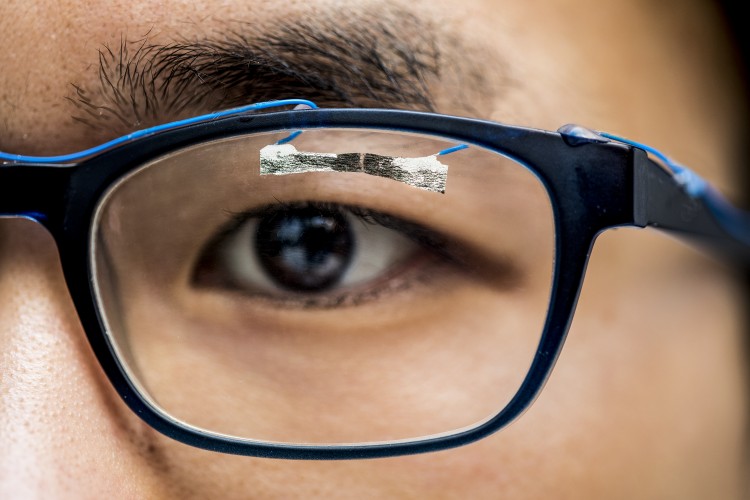By Warren Miller, contributing writer
Wearable technology seemingly gets smaller and more inconspicuous with each passing day, but the latest breakthrough will surprise even the most stoic tech savant. A team of engineers at the University of Washington has constructed a wearable sensor out of tissue paper, and you can not only blow your nose into it, but you can also use it to detect barely perceptible movements such as the blink of an eye or the beat of a heart.
In a paper published in last month’s issue of the scientific journal Advanced Materials Technologies, the UW team illustrates that when an ordinary piece of tissue paper is soaked in a solution of carbon nanotube-laced water and then torn into pieces, the broken fibers of the paper take on sensory properties. The little strips of tissue paper can detect subtle movements of the human eye and finger, making them potentially applicable in a variety of diverse fields such as healthcare and gaming.
“When tissue paper coated with carbon nanotubes is stretched by a designed length, the cellulose fibers coated with nanotubes are fractured and reoriented to form crossbar junctions near a crack,” Jinyuan Zhang, lead author on the paper, told Digital Trends. “The junctions create highly sensitive resistive and capacitive sensors. The resistive sensors can be used to measure strain, force, and pressure. The capacitive sensors can be used to measure force, pressure, and non-contact displacement.” According to Zhang, the sensors can also be used to measure heartbeats, finger movement, eyeball movement, and other human behavior.

The wearable sensor is capable of detecting a person’s pulse and the blink of an eye. Image source: University of Washington.
The paper sensors can be smaller than an adhesive bandage and are lightweight, flexible, and more cost-effective than their more cumbersome predecessors. When placed on different parts of the body, they have many different potential applications. A user could wear one on his or her glasses, for instance, in order to respond to the movement of their eye(s). Imagine that you’re playing a video game without using your hands to manipulate the controller — you can control your avatar with the wink of an eye, literally. The sensors also have huge future potential in medicine, such as possibly studying the extent of brain damage by tracking a patient’s arm and/or leg movement.
The use of such a common product like tissue paper as the “platform” for a complex sensor brings up many questions. What other common household items, when treated with an exotic substance like carbon nanotubes, turns into a useful, super-powered “mutant?” Could regular cotton fibers be treated with an exotic substance to make them produce power, deflect dirt, kill microbes, or tone your muscles? The possible combinations of normal items and “mutagen” exotic substances seem virtually limitless. What could be next?
The UW team is looking into commercial applications for their technology as we speak and have a patent on file as of December 2017. Although they’re still in the early stages, it might not be long until you see people walking around with pieces of tissue paper stuck to their pants leg — on purpose.
Advertisement
Learn more about Electronic Products Magazine





